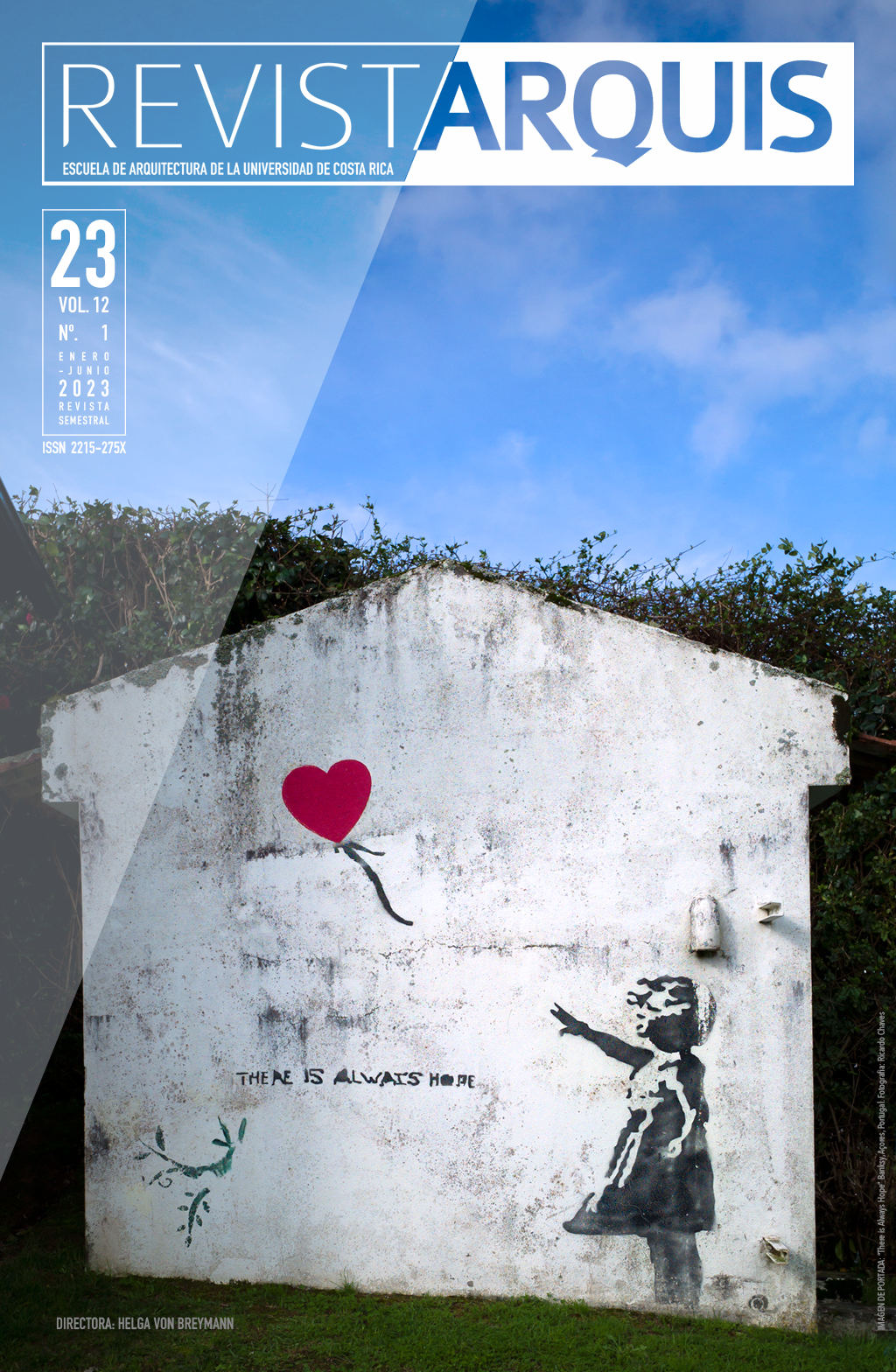Abstract
Most cities evolves and expand urban and demographically over time, which leads to think of new dynamics of urban growth from what is known, without forgetting the importance of public space in the image and development of a city. The objective of this research is to contrast the urban growth of the city of Manizales, Colombia by periods from its foundation to the present, based on the relationship between public space area, number of inhabitants and urbanized area. Using a geographic information system (GIS) with the free software QGIS, cartography was compiled and processed together with photographs and data layers for each period, to analyze the urban form, public space, urban density and population increase. Nine time periods were identified, from 1848 to 2021, in which a constant effective growth of urban form and public space was evidenced until the period 1993-2008, along with a gradual decrease in population density recorded since the founding of the city. So far, no urban studies have been found that contrast population growth and its relationship with the public space of the city of Manizales, preventing new visions of the historical evolution from its founding date to the present.
References
Aguilar, M. (2010). Transformación de la estructura verde en una ciudad intermedia tropical andina caso Ecoparques Manizales. Inédito.
Ahmed, A. (2019). Flexible Public Spaces through Spatial Urban Interventions, Towards Resilient Cities. European Journal of Sustainable Development, (8)4, 152-168. https://ecsdev.org/ojs/index.php/ejsd/article/view/858/853
Alcaldía de Manizales. (2021). Acuerdo Municipal 958 del 2017, Plan de Ordenamiento Territorial 2017-2031.
Angel, S., Parent, J. y Civco, D. (2007). Urban sprawl metrics: an analysis of global urban expansion using GIS. ASPRS 2007 Annual Conference, Florida.
Cifuentes, P. (2009). Modelización de los factores de crecimiento urbano como aporte a la sostenibilidad. Estudio de caso: Manizales – Colombia. Revista internacional de sostenibilidad, tecnología y humanismo, 4, 84-190. https://upcommons.upc.edu/handle/2099/8536
Cifuentes, P. y Londoño, J. (2010). Análisis del crecimiento urbano: una aproximación al estudio de los factores de crecimiento de la ciudad de Manizales como aporte a la planificación. Revista Gestión y Ambiente, (13)1, 54-57. https://revistas.unal.edu.co/index.php/gestion/article/view/25384
Danies, B. (2012). La eterna evolución del espacio urbano. Módulo Arquitectura CUC, (11), 183-191. https://revistascientificas.cuc.edu.co/moduloarquitecturacuc/article/view/29
Departamento Administrativo Nacional de Estadística [DANE], (2018). Censo Nacional de población y vivienda 2018. Gov.co. https://www.dane.gov.co/index.php/estadisticas-por-tema/demografia-y-poblacion/censo-nacional-de-poblacion-y-vivenda-2018
Departamento Administrativo Nacional de Estadística [DANE], (2020). Mejoras en retroproyecciones de población con base en el CNPV 2018. Gov.co. https://www.dane.gov.co/index.php/estadisticas-por-tema/demografia-y-poblacion/proyecciones-de-poblacion
Departamento Nacional de Planeación. (2012). Documento Conpes 3718. https://www.minambiente.gov.co/wp-content/uploads/2021/10/Conpes-3718-de-2012.pdf
Díez, C. y Monclús, J. (2017). Nuevas miradas al urbanismo contemporáneo. Universidad de Barcelona: Revista bibliográfica de geografía y ciencias sociales. 22(1217), 1-10. https://revistes.ub.edu/index.php/b3w/article/view/26444
Escobar, D. y Moncada, C. (2020). Asociaciones Público Privadas Asociadas al Ecoparque Selva Húmeda Tropical «Los Yarumos» analizando los factores de éxito y las lecciones aprendidas del caso: Manizales. Revista Espacios, (41)01, 15-22. https://www.revistaespacios.com/a20v41n01/a20v41n01p12.pdf
Gamboa, P. (2003). El sentido urbano del espacio público. Revista Bitácora Urbano Territorial, (1)7, 13-18. https://revistas.unal.edu.co/index.php/bitacora/article/view/18775
Giraldo, H. y Mertins, G. (2000). Manizales/ Colombia: una típica ciudad Andina. Espacio y Desarrollo, 12, 143-155. https://revistas.pucp.edu.pe/index.php/espacioydesarrollo/article/view/8093
Giraldo, T. y Vásquez, L. (2020). Caracterización de las tramas urbanas de la ciudad de Manizales, Colombia (1849-2017). Revista de Arquitectura, (1)22, 30-43. https://revistadearquitectura.ucatolica.edu.co/article/view/2669
Martí, M. (2005). Hacia una cultura urbana para el espacio público: la experiencia de Barcelona (1979-2003). Universidad politécnica de Cataluña, (13)1, 119-135. https://revistes.upc.edu/index.php/IDENTIDADES/article/view/8782
Marchant, C., Frick, J. y Vergara, L. (2016). Urban growth trends in midsize Chilean cities: the case of Temuco. Revista Brasileira de Gestão Urbana (Brazilian Journal of Urban Management), set./dez., (3)8, 376-389. https://www.scielo.br/j/urbe/a/XMSmG6ccfwSmCvb38cX6cmw/?format=pdf&lang=en
Obeso, Í. y Fernández, F. (2017). Recent urban development in Gijón (Spain). Historic aerial photography as a tool for sustainability assessment of the process. University of Oviedo: Cities, 67, 1-8. https://www.researchgate.net/publication/316502851_Recent_urban_development_in_Gijon_Spain_Historic_aerial_photography_as_a_tool_for_sustainability_assessment_of_the_process
Rodríguez, J. C. (2014). Composición de la forma urbana a partir del espacio público. Caso de estudio: Centro Histórico Tradicional de Bogotá [Tesis de maestría, Pontificia Universidad Javeriana], Repositorio Institucional – Pontificia Universidad Javeriana.
Rudd, A. (2020). City-wide public space strategies a guidebook for city leaders advance review copy. United Nations Human Settlements Programme (UN-Habitat). https://unhabitat.org/city-wide-public-space-strategies-a-guidebook-for-city-leaders
Satizábal, A. (2012). Armenia, Pereira y Manizales: Reseña histórica de su desarrollo urbano durante el siglo XX. Universidad Nacional de Colombia, Facultad de Ingeniería y Arquitectura. 3(161) https://repositorio.unal.edu.co/handle/unal/63133
Solà-Morales, M. (1973). Las formas de crecimiento urbano. Edicions UPC. https://urbanitasite.files.wordpress.com/2019/11/de-solc3a1-las-formas-de-crecimiento-urbano.pdf
Shekhar, S., y Xiong, H. (2008). QGIS. (Versión 3.16.16) [Software de computador]. Springer. https://qgis.org/es/site/
##plugins.facebook.comentarios##

This work is licensed under a Creative Commons Attribution-NonCommercial-NoDerivatives 4.0 International License.
Copyright (c) 2022 Juan Felipe Ortega Sapuyes, Tania Giraldo Ospina

